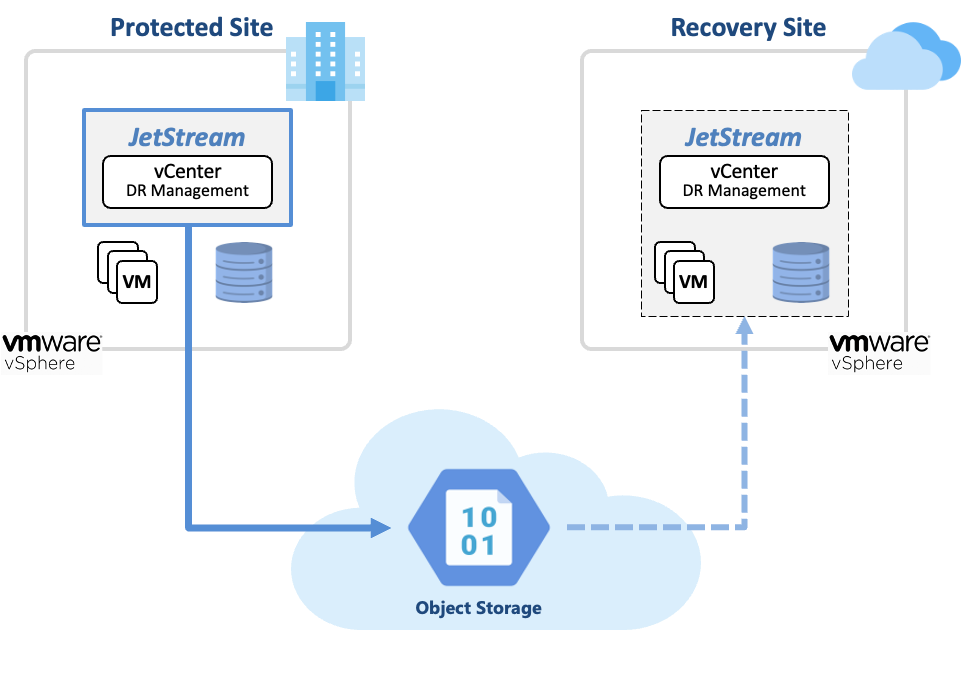Introduction to JetStream DR Deployments
This diagram is a conceptual illustration of a typical JetStream DR installation where an on-premises data center is protected using cloud object storage to a recovery site located in the cloud.

Figure 1: Illustration of a typical JetStream DR deployment using cloud object storage.
Protected Site
JetStream DR protects VMs that are added to a “protected domain” by replicating new storage IOs and existing data to an object store (Blob/S3) using the JetStream IOFilter driver and a DR Virtual Appliance (DRVA). The JetStream Management Server Appliance (MSA) integrates with vCenter, provides a vSphere Client plug-in, and orchestrates protection and recovery operations.
Each of these JetStream components communicate with each other, the VMware vSphere systems and object storage utilizing IPv4 protocols (Internet Protocol version 4) through virtual network segments and underlying physical networks.
Note: JetStream DR virtual appliances deployed at the protected site communicate with the protected site VMware ESXi and vCenter servers, other JetStream DR appliances deployed at the protected site, the JetStream MMS server in Azure, and the object storage configured at the Storage Site. JetStream DR virtual appliances at the protected site do not communicate with VMware servers or JetStream DR appliances at the recovery site.
Recovery Site
JetStream DR recovers protected VMs in a “protected domain” by reading the VMs data and configuration settings from the configured object store (Blob/S3) using a Recover from Object Cloud Virtual Appliance (RocVA), Representation VMs, then the recovery site DRVA.
The MSA at the recovery site orchestrates failover and continuous failover (CFO) operations.
Note: JetStream DR components (MSA, DRVA, RocVA) do not communicate directly between the protected and recovery sites. For control and coordination between sites JetStream appliances utilize the object storage only.
Storage Site
JetStream DR protects VMs by replicating their data and configuration to object storage in a “storage site.” The storage site can be independent of the protected and recovery sites. Various brands of object storage are supported. In deployments where an Azure VMware Solution Private Cloud is used as either the protected or recovery site, we expect that an Azure storage account (Blobs) will be used as the object store. JetStream DR appliances from both protected and recovery sites communicate with this object storage.